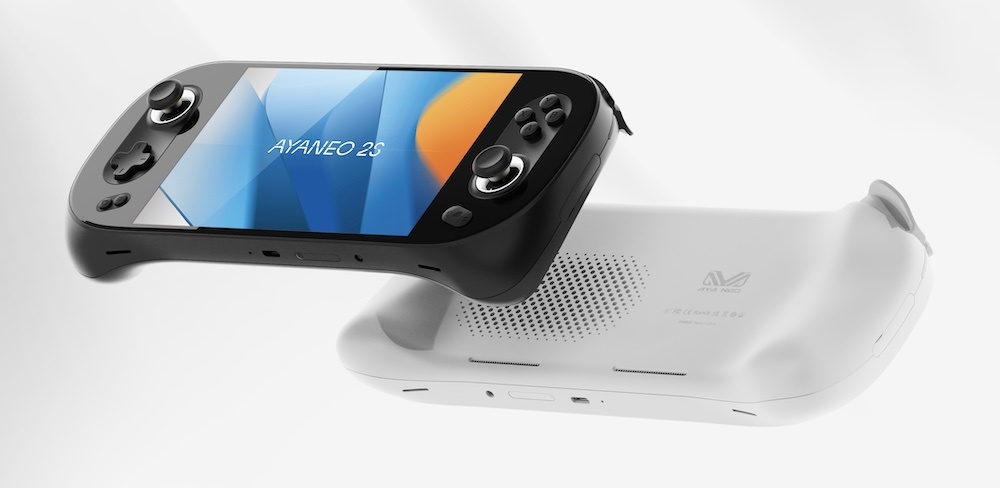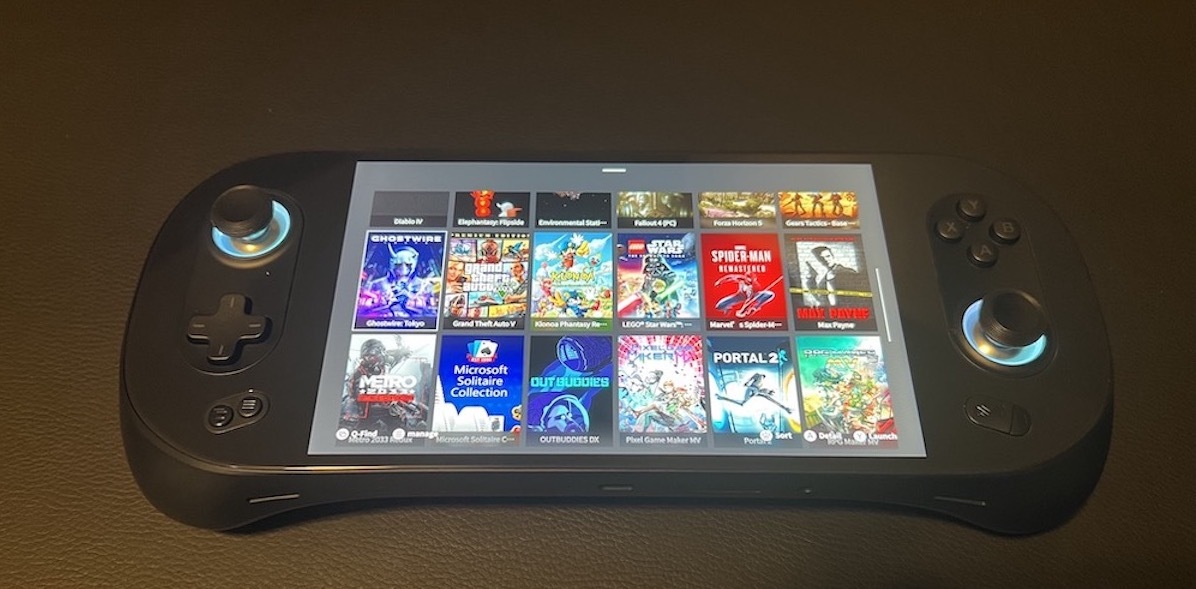Handheld gaming PCs have gradually inched toward the mainstream over the past few years. Yes, portable PCs are still relatively niche, but there are signs of more widespread interest and adoption in the near future. The success of Valve's Linux-powered Steam Deck, of course, is the prime example of this. On the Windows front, Asus, a major player in the PC hardware market, recently dipped its toes into the portable PC scene with the ROG Ally. Influential manufacturer support is key in popularizing new tech, but perhaps even more important is practicality.
High-end portable PCs routinely retail for $1,000 or more, yet they are comparatively weak (in many cases) to desktop PCs. With that in mind, it's understandable why consumer interest could be limited.
When high-end, yet comparatively weak to laptops/desktops, portables routinely retail for north of $1,000, broad consumer interest is, rather understandably, difficult to garner. But when that pricey portable can also realistically replace your pricey gaming laptop or even desktop PC? Well, then you're onto something. An argument could be made that Ayaneo, the prolific Chinese manufacturer of well-built Windows handhelds, releases too many handhelds, but as one of the pioneers of this emerging and exciting corner of the gaming industry, Ayaneo is demonstrating that a future where your main PC is roughly the size of a Nintendo Switch is in reach.
That's never been more clear to me than when I started testing the Ayaneo 2S, one of the manufacturer's newest Windows portables. Over the past two years, Ayaneo has developed an impressive track record for iteratively improving on the design and performance of its handhelds. With the help of AMD's powerful new Ryzen 7 7840U mobile chipset, the Ayaneo 2S offers yet another leap forward for the brand. For the average user, the 2S could quite easily double as a standard home PC--using either the official Ayaneo docking station or a USB-C hub.

I found myself comparing the Ayaneo 2S to the Lenovo laptop I purchased around the same time, and there wasn't a whole lot to scrutinize. The Ayaneo 2S offered similar performance, with comparable default settings and frame rates in the same games. Like its predecessors, the Ayaneo 2S comes in multiple configurations, starting at 16GB of RAM and a 512GB SSD. I tested the model with 32GB of RAM and a 2TB SSD. The RAM is overkill, as very few games are power hungry enough to utilize more than 16GB.
Meanwhile, my laptop is the Lenovo Slim 7 AMD Advantage Edition, which released last year for a retail price of $1,950 (I paid $1,350 for it earlier this year). The Ayaneo 2S starts at $1,140 ($950 for early bird pricing) and scales up to $1,850 ($1,430 for early birds). It's worth noting the high-end number is for a model with an obscene (and impractical) 64GB of RAM and a 4TB SSD.
High-end Ayaneo prices may sound gaudy compared to Steam Deck (they are), but I think it's more than reasonable to compare the Ayaneo and other Windows handhelds to the machines we use every day--our laptops and desktops--instead of the Steam Deck, which, let's be honest, is not a suitable PC replacement. If you purely want to play your Steam library on a handheld, yes, the Steam Deck is your best bet, no question about it. But most people use Windows PCs, and the Steam Deck, though technically capable of running Windows, is not optimized for it. When weighing costs and performance of a device like the Ayaneo 2S to gaming laptops, we've gotten to a point where handhelds can offer similar results for a comparable value--and that's huge.
I split my time just about evenly between using the Ayaneo 2S as a dedicated gaming handheld and as a makeshift desktop PC. As a handheld, I wasn't surprised to find the Ayaneo 2S is the most powerful and impressive portable I've used. This has been the case with each subsequent Ayaneo iteration. From a build perspective, the Ayaneo 2S is exquisite. The shell has a premium look and feel, and the contoured handles offer ergonomics that best all prior Ayaneo models (and the Steam Deck/Switch). Ayaneo's devices have always been well-made, and the 2S is no different. Keeping with the norm for Ayaneo, the controller inputs are superb. The Hall effect analog sticks and triggers are buttery smooth, the D-pad is responsive and precise, and the face buttons are every bit as good as first-party offerings from PlayStation and Xbox. The 2S also has rumble and gyro controls, each of which is adjustable along with stick and trigger sensitivity.
The 7-inch touchscreen is bezel-less glass and has a 1920x1200 resolution. It boasts a high contrast ratio and 130% sRGB. Being over 100% in the color range can sometimes cause displays to appear too vibrant to the point of being oversaturated, but the small display actually works in its favor here. Screen quality falls between the Steam Deck and Nintendo Switch OLED. It's brighter and more vibrant than the Deck, but it's not quite as nice as Nintendo's OLED panel.
At its default 15W TDP setting, the Ayaneo 2S handled everything I threw at it. The 2S ran a lot of modern games at high presets with frame rates north of 30. With a little tinkering--which sometimes includes bumping the TDP up to 22W--it's easy to get 60fps or higher with many games. I saw practically no difference between Diablo 4 on the 2S and the Lenovo Legion. The same could be said for Grand Theft Auto V, Marvel's Spider-Man Remastered, Forza Horizon 5, and the recently released System Shock remake. If you must have uncapped frame rates, the best resolution, and ultra presets across the board, you'll have to wait a few years for Windows handhelds to catch up or opt for a desktop. But for the average PC gamer who simply wants their games to look and run well, what's here should already be enough.

Battery life remains a concern for these workhorse handhelds, but the 2S has made some solid strides. When playing indie games on lower TDP settings, I managed to get about 4.5 hours out of a full charge, which is perfectly respectable. At high TDP settings with demanding games, I could still go from 100 to zero in about an hour--less than ideal. But considering the 2S, more than any Ayaneo before it, has the specs to be a fairly solid gaming rig when connected to an external display, the energy-consuming games feel more at home there anyway. After all, I'd rather play Marvel's Spider-Man Remastered on a big screen for the spectacle. And when hooked up to a hub or docked, the battery is of no concern. That said, all Windows handheld buyers should invest in a good laptop-grade portable charger, especially for travel.
If you do play demanding games and push the 2S to its limit, it's worth noting the fans can get loud, and the device can run a bit hot--though the 2S has the best heat dispersion in the Ayaneo line yet. The speakers are solid and get loud enough to cut through some of that noise, though you're still going to have a better audio experience with a pair of Bluetooth headphones. One neat audio feature is Ayaneo's "SoundTapMagic," which dynamically adds rumble to games that wouldn't normally offer it. Your mileage will vary depending on the game, but it's one of the cool little details that demonstrates Ayaneo's attention to detail.
As mentioned already, Ayaneo releases new handhelds frequently, so prospective buyers may feel like their new machine is already outdated within a few months. What's neat about the 2S is that Ayaneo included a kit that lets you easily pop open the shell and upgrade your SSD, though other core components can't be upgraded.
Whenever I talk about these handheld PCs, I always tell people that navigating Windows 11 is a pain with the relatively small touchscreen and button controls. Windows simply isn't designed for this form factor. Aya Space, the company's proprietary software that acts as a hub for your game clients, has long been a pretty decent solution for this issue. And the software recently got better with the introduction of Aya Space 2.0. Though still in beta, Aya Space now has a cleaner, easier-to-navigate UI that looks and feels far closer to the console-like experience these sorts of devices need to offer a pick-up-and-play experience.
The Ayaneo 2S caused my brand-new gaming laptop to collect dust, and I think that's part of the reason why these powerful, pricey Windows devices will succeed in the years to come. The Nintendo Switch is incredibly popular for many reasons, but the hybrid nature of it is one of its biggest selling points. Windows handhelds like the Ayaneo 2S have the potential to offer similar appeal, only with a much wider use case. Most everyone needs a computer, and gaming is only becoming more popular. Not everyone who regularly plays games will want to replace their Windows machine with a handheld, but the Ayaneo 2S makes a strong case for why doing so is a much more viable option than some might expect.
Early bird pricing for the Ayaneo 2S is still available at Indiegogo. You can check out Ayaneo's full lineup of products on the Ayaneo Store.
Ayaneo provided a sample of the Ayaneo 2S for the purpose of this review.








